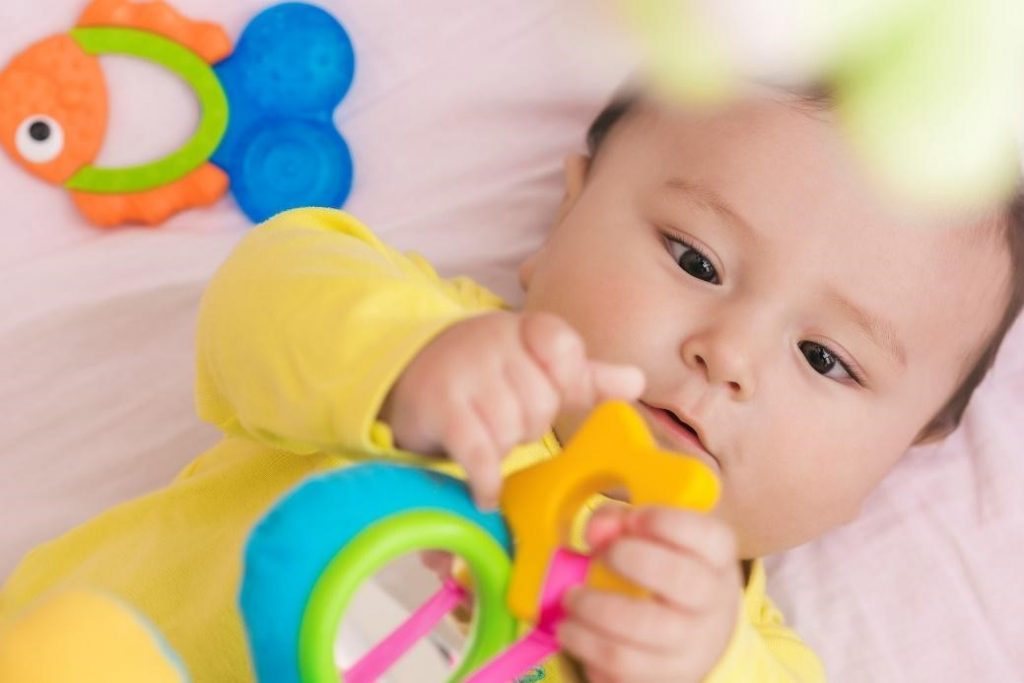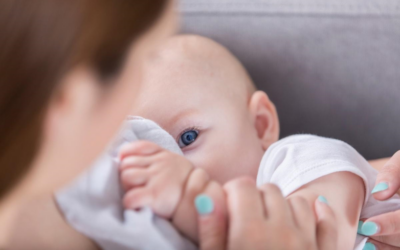Help babies in your care improve visual skills by understanding developmental milestones and learning opportunities
Babies come into the world with a lot to learn. Even eyesight is a skill they need to discover and develop. Although babies can see when they are born, they need to learn how to focus and move their eyes, to use them as a pair to send visual information to the brain.
Seeing the world is crucial to babies for learning, processing new information, and making connections. Vision problems in infants can cause developmental delays, so encouraging visual development and detecting sight issues early on are important.
Visual milestones by age
As with most aspects of development, vision significantly improves over a set of developmental milestones during the first few months of life. Some babies meet different milestones at different times than others, but in general, these milestones occur according to the following timeline.
Birth to four months
- Newborns can generally focus on objects eight to ten inches from their eyes – perfect for seeing their parents’ faces. They can see high-contrast objects but have difficulty differentiating between them and moving their eyes.
- During the first two months, an infant’s eyes may appear crossed or uncoordinated; this is usually normal. Bring up any concerns with your pediatrician for evaluation.
- By four months, hand-eye coordination begins to develop, and the eyes start to work together as vision improves. Babies can follow visual targets with their eyes and reach for objects.
Help baby by doing the following:
- Changing sides when feeding
- Talking to the baby as you move so they can track you
- Giving them high-contrast toys to play with
Five to eight months
- By five months, depth perception begins to develop, enabling the baby to see the world in 3-D
- Also by five months, color perception improves
- By eight months, crawling often begins, and hand-eye-foot-body coordination and spatial awareness develop more quickly
Help baby by doing the following:
- Hanging a mobile over the crib for baby to focus on
- Encouraging tummy time or playtime on the floor
- Playing patty-cake or games with baby’s hands
- Giving them toys such as plastic blocks or colorful stacking cups to hold
Nine to twelve months
- By nine months, babies often begin standing up and grasping objects with their thumbs and forefingers
- By twelve months, most babies improve at crawling or begin walking, which improves hand-eye coordination
- By twelve months, babies begin to throw things with better accuracy
Help baby by doing the following:
- Playing hide-and-seek with toys or peekaboo to improve visual memory
- Encouraging crawling, walking, or moving
- Saying the names of objects you’re interacting with so baby learns word associations
Be watchful
Eye and vision problems are rare in babies, but talk to your pediatrician if you notice any of the following:
- Sensitivity to light
- Whiteness in the pupil
- Red or encrusted eyelids
- Constant tearing or weeping
- Unusual eye turning or movement
Baby’s visual development usually occurs naturally. However, you can help by following the above tips. Having an interest in and awareness of the baby’s vision may result in the early intervention of a physical issue. Otherwise, simply give the baby visually stimulating opportunities for play and enjoyment so they can learn about, see, and understand the world around them.
The Virginia Infant & Toddler Specialist Network helps improve the quality of care for infants and toddlers through extensive resources, services, and education for caregivers. Learn more about how we can help you improve the standard of care.




